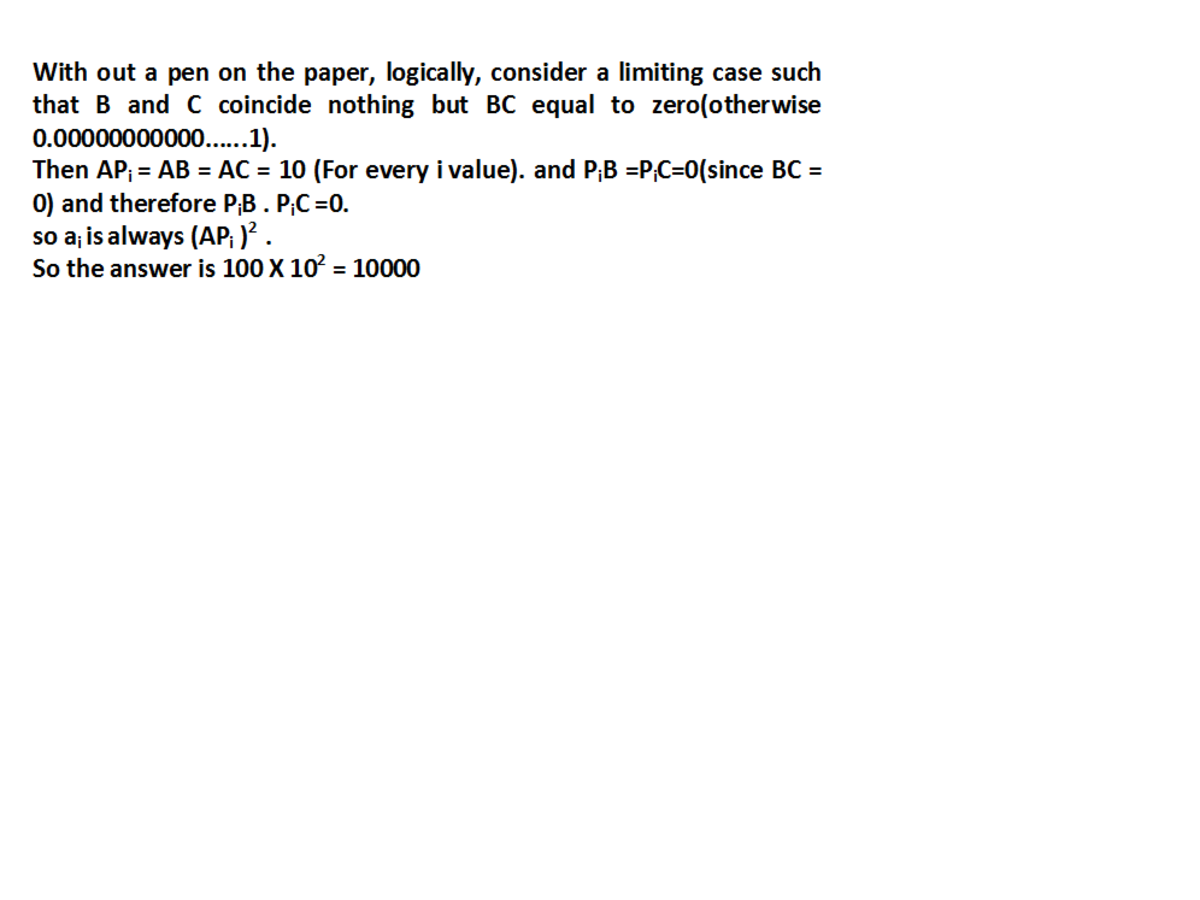100 Days Streak problem!
Consider Δ A B C such that A B = A C = 1 0 . Plot 1 0 0 distinct points on the side B C .Define a i = A P i 2 + P i B . P i C , then find the value of
i = 1 ∑ 1 0 0 a i
The answer is 10000.
This section requires Javascript.
You are seeing this because something didn't load right. We suggest you, (a) try
refreshing the page, (b) enabling javascript if it is disabled on your browser and,
finally, (c)
loading the
non-javascript version of this page
. We're sorry about the hassle.
4 solutions
Using Stewart's Theorem, we get: P i C 1 0 2 + P i B 1 0 2 = B C ( A P i + P i B . P i C ) 1 0 0 ( P i B + P i C ) = B C ( A P i + P i B . P i C )
since ( A P i + P i B . P i C ) = a i , then 1 0 0 ( P i B + P i C ) = B C . a i Consider that P i B + P i C = B C , then 1 0 0 ( P i B + P i C ) = B C . a i 1 0 0 B C = B C . a i
B C = 0 , then it can be crossed out. Thus, we have a i = 1 0 0 for any integers of i
The value of i = 1 ∑ 1 0 0 a i is i = 1 ∑ 1 0 0 1 0 0 = 1 0 0 ∗ 1 0 0 = 1 0 0 0 0
Since there are no restrictions in the question, let us consider all the 100 points at B and infinitesimally close to B. In this case P i B can be considered as an infinitesimally small value, rounded off to 0. i = 1 ∑ 1 0 0 a i = i = 1 ∑ 1 0 0 ( A P i 2 + P i B . P i C ) Since the points are at B, A P i = A B = 1 0 i = 1 ∑ 1 0 0 a i = i = 1 ∑ 1 0 0 A B 2 = i = 1 ∑ 1 0 0 1 0 0 1 0 0 0 0 0

Construction : A D ⊥ B C at D .
Since the triangle is isosceles , B D = D C = x .Let D P i = x i .
a i = A P i 2 + P i B . P i C ⇒ a i = A P i 2 + ( x − x i ) ( x + x i ) ⇒ a i = A P i 2 − x i 2 + x 2 ⇒ a i = A D 2 + x 2 … (Pythagoras Theorem for 1 ≤ i ≤ 1 0 0 ) ⇒ a i = A B 2 = ( 1 0 ) 2 = 1 0 0 ⇒ i = 1 ∑ 1 0 0 a i = 1 0 0 0 0